Video calls for reducing social isolation and loneliness in older people: a rapid review
- PMID: 32441330
- PMCID: PMC7387868
- DOI: 10.1002/14651858.CD013632
Video calls for reducing social isolation and loneliness in older people: a rapid review
Abstract
Background: The current COVID-19 pandemic has been identified as a possible trigger for increases in loneliness and social isolation among older people due to the restrictions on movement that many countries have put in place. Loneliness and social isolation are consistently identified as risk factors for poor mental and physical health in older people. Video calls may help older people stay connected during the current crisis by widening the participant's social circle or by increasing the frequency of contact with existing acquaintances.
Objectives: The primary objective of this rapid review is to assess the effectiveness of video calls for reducing social isolation and loneliness in older adults. The review also sought to address the effectiveness of video calls on reducing symptoms of depression and improving quality of life.
Search methods: We searched CENTRAL, MEDLINE, PsycINFO and CINAHL from 1 January 2004 to 7 April 2020. We also searched the references of relevant systematic reviews.
Selection criteria: Randomised controlled trials (RCTs) and quasi-RCTs (including cluster designs) were eligible for inclusion. We excluded all other study designs. The samples in included studies needed to have a mean age of at least 65 years. We included studies that included participants whether or not they were experiencing symptoms of loneliness or social isolation at baseline. Any intervention in which a core component involved the use of the internet to facilitate video calls or video conferencing through computers, smartphones or tablets with the intention of reducing loneliness or social isolation, or both, in older adults was eligible for inclusion. We included studies in the review if they reported self-report measures of loneliness, social isolation, symptoms of depression or quality of life. Two review authors screened 25% of abstracts; a third review author resolved conflicts. A single review author screened the remaining abstracts. The second review author screened all excluded abstracts and we resolved conflicts by consensus or by involving a third review author. We followed the same process for full-text articles.
Data collection and analysis: One review author extracted data, which another review author checked. The primary outcomes were loneliness and social isolation and the secondary outcomes were symptoms of depression and quality of life. One review author rated the certainty of evidence for the primary outcomes according to the GRADE approach and another review author checked the ratings. We conducted fixed-effect meta-analyses for the primary outcome, loneliness, and the secondary outcome, symptoms of depression.
Main results: We identified three cluster quasi-randomised trials, which together included 201 participants. The included studies compared video call interventions to usual care in nursing homes. None of these studies were conducted during the COVID-19 pandemic. Each study measured loneliness using the UCLA Loneliness Scale. Total scores range from 20 (least lonely) to 80 (most lonely). The evidence was very uncertain and suggests that video calls may result in little to no difference in scores on the UCLA Loneliness Scale compared to usual care at three months (mean difference (MD) -0.44, 95% confidence interval (CI) -3.28 to 2.41; 3 studies; 201 participants), at six months (MD -0.34, 95% CI -3.41 to 2.72; 2 studies; 152 participants) and at 12 months (MD -2.40, 95% CI -7.20 to 2.40; 1 study; 90 participants). We downgraded the certainty of this evidence by three levels for study limitations, imprecision and indirectness. None of the included studies reported social isolation as an outcome. Each study measured symptoms of depression using the Geriatric Depression Scale. Total scores range from 0 (better) to 30 (worse). The evidence was very uncertain and suggests that video calls may result in little to no difference in scores on the Geriatric Depression Scale compared to usual care at three months' follow-up (MD 0.41, 95% CI -0.90 to 1.72; 3 studies; 201 participants) or six months' follow-up (MD -0.83, 95% CI -2.43 to 0.76; 2 studies, 152 participants). The evidence suggests that video calls may have a small effect on symptoms of depression at one-year follow-up, though this finding is imprecise (MD -2.04, 95% CI -3.98 to -0.10; 1 study; 90 participants). We downgraded the certainty of this evidence by three levels for study limitations, imprecision and indirectness. Only one study, with 62 participants, reported quality of life. The study measured quality of life using a Taiwanese adaptation of the Short-Form 36-question health survey (SF-36), which consists of eight subscales that measure different aspects of quality of life: physical function; physical role; emotional role; social function; pain: vitality; mental health; and physical health. Each subscale is scored from 0 (poor health) to 100 (good health). The evidence is very uncertain and suggests that there may be little to no difference between people allocated to usual care and those allocated to video calls in three-month scores in physical function (MD 2.88, 95% CI -5.01 to 10.77), physical role (MD -7.66, 95% CI -24.08 to 8.76), emotional role (MD -7.18, 95% CI -16.23 to 1.87), social function (MD 2.77, 95% CI -8.87 to 14.41), pain scores (MD -3.25, 95% CI -15.11 to 8.61), vitality scores (MD -3.60, 95% CI -9.01 to 1.81), mental health (MD 9.19, 95% CI 0.36 to 18.02) and physical health (MD 5.16, 95% CI -2.48 to 12.80). We downgraded the certainty of this evidence by three levels for study limitations, imprecision and indirectness.
Authors' conclusions: Based on this review there is currently very uncertain evidence on the effectiveness of video call interventions to reduce loneliness in older adults. The review did not include any studies that reported evidence of the effectiveness of video call interventions to address social isolation in older adults. The evidence regarding the effectiveness of video calls for outcomes of symptoms of depression was very uncertain. Future research in this area needs to use more rigorous methods and more diverse and representative participants. Specifically, future studies should target older adults, who are demonstrably lonely or socially isolated, or both, across a range of settings to determine whether video call interventions are effective in a population in which these outcomes are in need of improvement.
Copyright © 2020 The Cochrane Collaboration. Published by John Wiley & Sons, Ltd.
Conflict of interest statement
Noone C: none Mc Sharry J: none Smalle M: none Burns A: none Dwan K: none Devane D: none Morrissey E: none
Figures
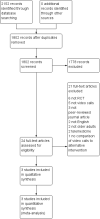

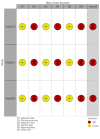

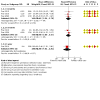
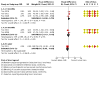
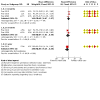
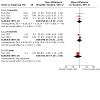
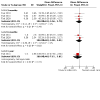

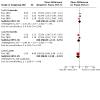


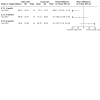




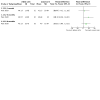

References
References to studies included in this review
Tsai 2010 {published data only (unpublished sought but not used)}
Tsai 2011 {published data only (unpublished sought but not used)}
Tsai 2020 {published data only (unpublished sought but not used)}
References to studies excluded from this review
Arthanat 2016 {published data only}
-
- Arthanat S, Vroman K. A home-based information communication technology training for older adults: effectiveness, value, and perspectives. American Journal of Occupational Therapy 2016;70 Suppl 1.
Banbury 2020 {published data only}
-
- Banbury A, Nancarrow S, Dart J, Gray L, Dodson S, Osborne R, et al. Adding value to remote monitoring: co-design of a health literacy intervention for older people with chronic disease delivered by telehealth - the Telehealth Literacy Project. Patient Education and Counseling 2020;103(3):597-606. - PubMed
Brown 2007 {published data only}
-
- Brown EV. Remote control training. Health Management Technology 2007;28(3):18-19. - PubMed
Choi 2020 {published data only}
-
- Choi NG, Pepin R, Marti CN, Stevens CJ, Bruce ML. Improving social connectedness for homebound older adults: randomized controlled trial of tele-delivered behavioral activation versus tele-delivered friendly visits. American Journal of Geriatric Psychiatry (in press). [DOI: 10.1016/j.jagp.2020.02.008] - DOI - PMC - PubMed
Clinician's Research Digest 2012 {published data only}
-
- Clinician's Research Digest. Videoconferencing as a method of treatment delivery for older adults: the effectiveness of a behavioral activation treatment. Clinician's Research Digest: Adult Populations 2012;30(1):1.
Dowling 2014 {published data only}
-
- Dowling GA, Merrilees J, Mastick J, Chang VY, Hubbard E, Moskowitz JT. Life enhancing activities for family caregivers of people with frontotemporal dementia. Alzheimer Disease and Associated Disorders 2014;28(2):175-81. - PubMed
Elliott 2008 {published data only}
-
- Elliott TR, Brossart D, Berry JW, Fine PR. Problem-solving training via videoconferencing for family caregivers of persons with spinal cord injuries: a randomized controlled trial. Behaviour Research and Therapy 2008;46(11):1220-9. - PubMed
Ferreira 2015 {published data only}
-
- Ferreira S, Torres A, Mealha Ó, Veloso A. Training effects on older adults in information and communication technologies considering psychosocial variables. Educational Gerontology 2015;41(7):482-93.
Fokin 2011 {published data only}
-
- Fokin VA, Fokin IV. The possibilities of electronic-social network in services for old citizens. Uspekhi Gerontologii/Advances in Gerontology 2011;242011(124):162-7. - PubMed
Hicken 2017 {published data only}
-
- Hicken BL, Daniel C, Luptak M, Grant M, Kilian S, Rupper RW. Supporting caregivers of rural veterans electronically (SCORE). Journal of Rural Health 2017;33(3):305-13. - PubMed
Hori 2009 {published data only}
-
- Hori M, Kubota M, Ando K, Kihara T, Takahashi R, Kinoshita A. The effect of videophone communication (with Skype and webcam) for elderly patients with dementia and their caregivers. Gan to Kagaku Ryoho. Cancer & Chemotherapy 2009;36:36-8. - PubMed
Mongan 2016 {published data only}
-
- Mongan E. Social media a new medicine? McKnight's Long-Term Care News 2016;37(10):2.
Morton 2018 {published data only}
-
- Morton TA, Wilson N, Haslam C, Birney M, Kingston R, McCloskey LG. Activating and guiding the engagement of seniors with online social networking: experimental findings from the AGES 2.0 project. Journal of Aging and Health 2018;30(1):27-51. - PubMed
Sánchez‐Rico 2017 {published data only}
-
- Sánchez-Rico A, Garel P, Notarangelo I, Quintana M, Hernández G, Asteriadis S, et al. ICT services for life improvement for the elderly. Studies in Health Technology and Informatics 2017;242:600-5. - PubMed
Schwindenhammer 2015 {published data only}
-
- Schwindenhammer TM. Videoconferencing intervention for depressive symptoms and loneliness in nursing home elders [PhD thesis]. Illinois State University, 2014.
Siniscarco 2017 {published data only}
-
- Siniscarco MT, Love-Williams C, Burnett-Wolle S. Video conferencing: an intervention for emotional loneliness in long-term care. Activities, Adaptation & Aging 2017;41(4):316-29.
Slegers 2008 {published data only}
-
- Slegers K, Van Boxtel MP, Jolles J. Effects of computer training and internet usage on the well-being and quality of life of older adults: a randomized, controlled study. Journals of Gerontology. Series B, Psychological Sciences and Social Sciences 2008;63(3):176-84. - PubMed
Smith 2017 {published data only}
Turnbull 2012 {published data only}
-
- Turnbull H. SPAD (Speech Pathologists in Adult Disability) top 10. Journal of Clinical Practice in Speech-Language Pathology 2012;14(3):153-4.
VanderPloeg 2016 {published data only}
-
- Van der Ploeg ES, Eppingstall B, O’Connor DW. Internet video chat (Skype) family conversations as a treatment of agitation in nursing home residents with dementia. International Psychogeriatrics / IPA 2016;28(4):697-8. - PubMed
Additional references
Armitage 2020
Baker 2018
-
- Baker S, Warburton J, Waycott J, Batchelor F, Hoang T, Dow B, et al. Combatting social isolation and increasing social participation of older adults through the use of technology: a systematic review of existing evidence. Australasian Journal on Ageing 2018;37(3):184-93. - PubMed
Cacioppo 2010
Chen 2016
Chipps 2017
-
- Chipps J, Jarvis MA, Ramlall S. The effectiveness of e-interventions on reducing social isolation in older persons: a systematic review of systematic reviews. Journal of Telemedicine and Telecare 2017;23(10):817-27. - PubMed
Courtin 2017
-
- Courtin E, Knapp M. Social isolation, loneliness and health in old age: a scoping review. Health & Social Care in the Community 2017;25(3):799-812. - PubMed
Covidence [Computer program]
-
- Veritas Health Innovation Covidence. Version accessed after 7 April 2020. Melbourne, Australia: Veritas Health Innovation, 2020. Available at covidence.org.
Deeks 2019
-
- Deeks JJ, Higgins JP, Altman DG (editors). Chapter 10: Analysing data and undertaking meta-analyses. In: Higgins JP, Thomas J, Chandler J, Cumpston M, Li T, Page MJ, et al (editors). Cochrane Handbook for Systematic Reviews of Interventions version 6.0 (updated July 2019). Cochrane, 2019. Available from www.training.cochrane.org/handbook.
Fakoya 2020
Fixsen 2005
-
- Fixsen DL, Naoom SF, Blase KA, Friedman RM, Wallace F. Implementation Research: A Synthesis of the Literature. The National Implementation Research Network, 2005.
Ge 2017
Hawton 2011
-
- Hawton A, Green C, Dickens AP, Richards SH, Taylor RS, Edwards R, et al. The impact of social isolation on the health status and health-related quality of life of older people. Quality of Life Research 2011;20(1):57-67. - PubMed
Higgins 2003
Higgins 2017
-
- Higgins JP, Altman DG, Sterne JA (editors). Chapter 8: Assessing risk of bias in included studies. In: Higgins JP, Churchill R, Chandler J, Cumpston MS (editors), Cochrane Handbook for Systematic Reviews of Interventions version 5.2.0 (updated June 2017), Cochrane, 2017. Available from www.training.cochrane.org/handbook.
Huang 2006
-
- Huang IC, Wu AW, Frangakis C. Do the SF-36 and WHOQOL-BREF measure the same constructs? Evidence from the Taiwan population. Quality of Life Research 2006;15(1):15-24. - PubMed
Jarvis 2019
-
- Jarvis M, Padmanabhanunni A, Balakrishna Y, Chipps J. The effectiveness of interventions addressing loneliness in older persons: an umbrella review. International Journal of Africa Nursing Sciences 2019;12:100177. [DOI: 10.1016/j.ijans.2019.100177] - DOI
Killip 2004
McGuinness 2019 [Computer program]
-
- robvis: an R package and web application for visualising risk-of-bias assessments. Version accessed after 7 April 2020. McGuinness LA, 2019. github.com/mcguinlu/robvis.
Microsoft Corporation 2018 [Computer program]
-
- Microsoft Excel. Microsoft Corporation, 2018. available at office.microsoft.com/excel.
Moher 2009
Musich 2015
Pew Research Center 2019
-
- Pew Research Center. Smartphone ownership is growing rapidly around the world, but not always equally. Available from www.pewresearch.org/global/2019/02/05/smartphone-ownership-is-growing-ra... 2019.
Porges 2003
-
- Porges SW. Social engagement and attachment: a phylogenetic perspective. Annals of the New York Academy of Sciences 2003;1008:31-47. - PubMed
Schünemann 2019
-
- Schünemann HJ, Higgins JP, Vist GE, Glasziou P, Akl EA, Skoetz N, et al. Chapter 14: Completing ‘Summary of findings’ tables and grading the certainty of the evidence. In: Higgins JP, Thomas J, Chandler J, Cumpston M, Li T, Page MJ, et al (editors). Cochrane Handbook for Systematic Reviews of Interventions version 6.0 (updated July 2019). Cochrane, 2019. Available from www.training.cochrane.org/handbook.
Shenkin 2017
Singh 2015
-
- Singh K, Srivastava SK. Loneliness and quality of life among elderly people. Journal of Psychosocial Research 2014;9(1):11-8.
Stiles 1998
-
- Stiles PG, McGarrahan JF. The Geriatric Depression Scale: a comprehensive review. Journal of Clinical Geropsychology 1998;4(2):89-110.
Sutton 2000
-
- Sutton AJ, Abrams KR, Jones DR, Sheldon TA, Song F. Methods for Meta-Analysis in Medical Research. Chichester: Wiley, 2000.
Tsai 2007
-
- Tsai YF. Self-care management and risk factors for depressive symptoms among Taiwanese institutionalized residents. Nursing Research 2007;56(2):124-31. - PubMed
Tsai 2020 [pers comm]
-
- Tsai H. Cochrane Rapid Review on videoconferencing to reduce loneliness [personal communication]. Email to: C Noone 23 April 2020.
Valtorta 2012
Weiss 1973
-
- Weiss RS. Loneliness: The Experience of Emotional and Social Isolation. Cambridge, MA: MIT Press, 1973.
WHO 2010
-
- World Health Organization. Telemedicine: opportunities and developments in Member States: report on the second global survey on eHealth. World Health Organization. [ISBN: 9789241564144]
Wu 2020
-
- Wu Z, McGoogan JM. Characteristics of and important lessons from the coronavirus disease 2019 (COVID-19) outbreak in China. Summary of a report of 72 314 cases from the Chinese Center for Disease Control and Prevention. JAMA 2020;323(13):1239-42. - PubMed
References to other published versions of this review
Noone 2020
-
- Noone C, Morrissey EC, Sharry JM, Devane D, Burns A, Smalle M, et al. Cochrane rapid review protocol - the effectiveness of video calls for reducing social isolation and loneliness in older people. Available from osf.io/rfxky. [DOI: 10.17605/OSF.IO/RFXKY] - DOI - PMC - PubMed
Publication types
MeSH terms
LinkOut - more resources
Full Text Sources
Miscellaneous

